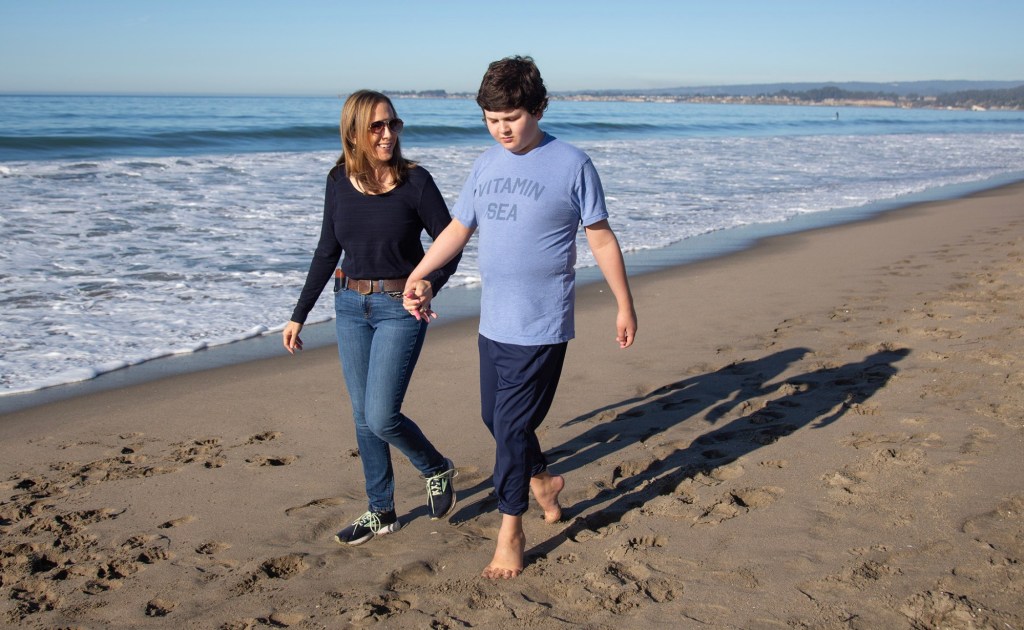It was at the height of the pandemic when Katrina Watters and her husband Scott made the difficult decision to place their then-10-year-old autistic son Matthew in a group home run by the Pacific Center for Autism Education.
The 4-bedroom, 2-bath, single-family home at 7576 Kirwin Lane in Cupertino, where Matthew moved into in September 2020, was one of the nonprofit’s six homes — two for children and four for adults — with moderate to severe autism and other related developmental disabilities.
Matthew is nonverbal and Watters said PACE has given her a “level of peace that I can’t even describe.”
In March, Matthew, now 14, was moved from the home on Kirwin Lane to another residence operated by PACE in Cupertino as the nonprofit winded down operations at the Kirwin site in preparation to sell. High labor costs combined with low reimbursement rates from the state’s department of developmental services made the Kirwin Lane property no longer financially feasible, according to the nonprofit.

In July, PACE put the Kirwin home up for sale, and Executive Director Kurt Ohlfs said they received a $3.13 million offer, with an escrow closing date set for late August. He said the money was critical in helping finance a new special education school the nonprofit is starting in Sunnyvale. But because PACE purchased the home, in part, using funds from the U.S. Department of Housing and Urban Development marked for providing affordable housing — in this case children with autism from low income families — the nonprofit won’t be able to sell it at a market rate price for the foreseeable future.
“This was a significant setback for us,” Ohlfs said. “The net loss to us is hundreds of thousands of dollars even if we were to secure the same sale price. All that money that’s tied up in a vacant house is money that’s lost opportunity for us to do good in the community.”
PACE bought the 1,904 square foot home on Kirwin Lane in 1995 with the help of two $100,000 loans — in the form of community development block grants via HUD — from the city of Cupertino and Santa Clara County. The agreements were for 30 years with the stipulation that PACE would provide housing for low and very low income residents. Both were paid off in full in 2016.
But over the last several years, the nonprofit has been operating the site at a loss, according to financial statements reviewed by this news organization. Ohlfs said just last year, PACE accrued roughly $220,000 in debt trying to maintain the home for three children with autism due to staffing shortages, the high cost of labor and low reimbursement rates from the state.
While the agreement with the county is no longer in effect because the loan was paid off, the nonprofit’s contract with the city requires PACE to maintain the Kirwin Lane home as affordable housing for the full 30 years. There is 15 months left on the covenant, though no one has lived there since June and Ohlfs said it will continue to remain vacant until the time is up because they can no longer afford to staff it.
“Cupertino’s stance here is we value the preservation of affordable housing,” Deputy City Manager Tina Kapoor told the Mercury News. “PACE has not substantiated any claims of financial hardship and it still has the contractual agreement with the city.” Cupertino officials declined to answer further questions citing active litigation since the nonprofit has filed a lawsuit in an attempt to remedy the issue before the 15 months left in the 30 year agreement is up.
The battle between the city and the nonprofit comes at a time when Cupertino is struggling to meet its state-mandated housing goals — particularly affordable housing — and is months behind schedule in submitting plans for the future of housing in the city.
Ohlfs said the city “seems to be more focused on something that’s not related to the needs of the people in the city,” and because of the issue, the nonprofit is considering selling its other Cupertino home where Matthew currently lives and will “move those residents to a more favorable location in another city close by.”
PACE is weighing its options to move operations completely out of Cupertino at a time when group homes for children with disabilities have been dwindling in the Bay Area, according to Ohlfs.

If it wasn’t for PACE, Watters said she would have to send Matthew someone much farther away — possibly even out of California. When her and her husband first started looking at residential facilities, one of the closest group homes they could find that fit Matthew’s needs was in Fresno. Their search stretched as far as Minnesota and Massachusetts.
Watters, who lives in Sunnyvale, said having him just down the road meant their family didn’t have to go through the grief of sending him elsewhere.
“Him being so close to us, he still is very much part of our family,” she said, referring to weekly dinners at their home and trips to the beach in Aptos on Saturdays. “It was just that he would go back to a different physical space to go to bed and to do all his things, but he would come home and visit all the time and we could be there within 10 minutes. The emotional factor in that was just so amazing that he’s not here but he is so close.”
This content was originally published here.
